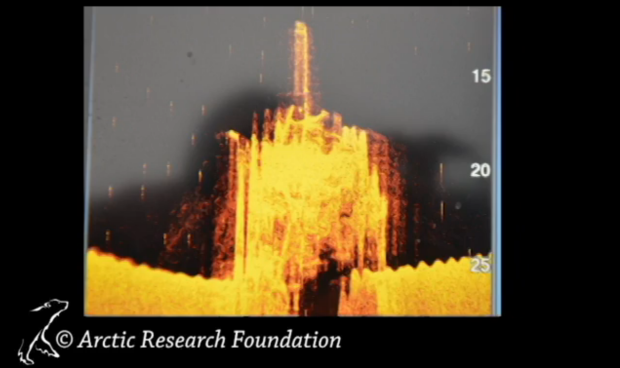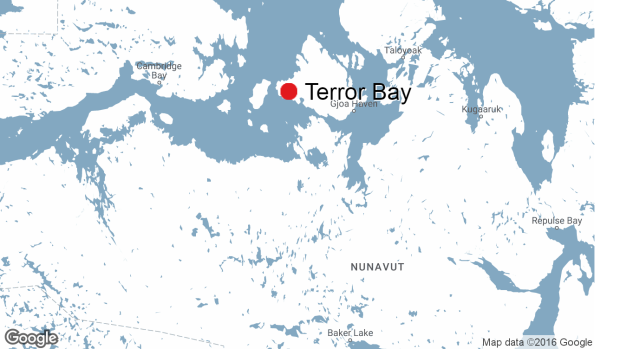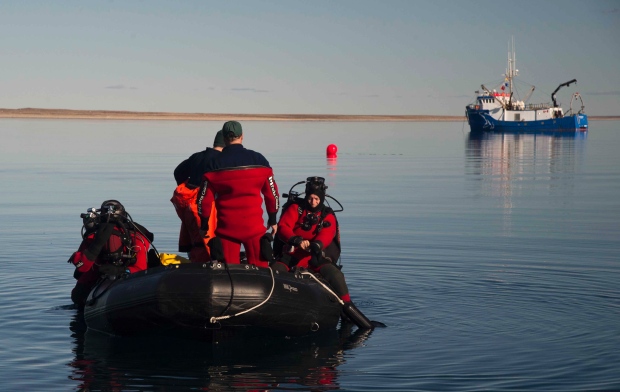Franklin’s HMS Terror Found

A scanned image of the HMS Terror submerged in Nunavut. Arctic Research Foundation image.
Just over a week ago the second piece of the 1845 ill – fated Franklin expedition was found in Terror Bay, Nunavut on the southern shore of King William Island. The illusive second grande puzzle piece of the expedition mystery was found in about 70 feet of water.
The Terror, abandoned in thick sea ice three years after it set sail from England in 1845, failed in its attempt to sail through the Northwest Passage. The wooden ship was discovered in “pristine condition” in a calm bay north of where the wreck of HMS Erebus was located in 2014.
Arctic Research Foundation’s Martin Bergmann research vessel located the shipwreck, with all three masts intact and standing while nearly all hatches closed.
“Resting proud on 24 metres of water, we found HMS Terror — 203 years old, it is perfectly preserved in the frigid waters of the Northwest Passage,” Arctic Research Foundation spokesman Adrian Schimnowski stated.

Location of the recently discovered HMS Terror. Google Maps image.
Trapped in ice somewhere between King William Island and Victoria Island the HMS Terror was found 92 kilometres south of that location. Bergmann’s crew decided to detour south to Terror Bay after an Inuk crew member, Sammy Kogvik from Gjoa Haven. Kogvik explained to the crew how during a fishing excursion about six years prior he sighted a rather large wood pillar extruding from the ice surface on Terror Bay.
“I was on my way to the lake to go put nets out,” Kogvik said in the Arctic Research Foundation’s video. “And when we got in the bay … as I was getting off the snowmobile, I looked up to my left, and there was something weird sticking out of the ocean on the ice.

HMS Erebus dive site in 2014. Parks Canada photo.
“This is tremendously exciting news,” said Geiger. “The nature of the find, as reported, underscores also the vital role of the Inuit then and now in the Franklin saga.
The doomed expedition of nearly 170 years ago, tragically culminated in 129 deaths of crewmen. The Terror and Erebus lay locked in ice and submerged in water undiscovered until a search team, led by Parks Canada, unveiled the Erebus two years ago.





